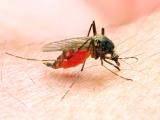Jul 13, 2005 (CIDRAP News) The latest report from the World Health Organization (WHO) on the Marburg hemorrhagic fever epidemic in Angola gives significantly lower numbers of cases and deaths than previous reports.
After a review of data on the epidemic, the Angolan Ministry of Health reported a total of 351 cases, 312 of them fatal, the WHO said today. In a Jun 17 update, the WHO had listed the Ministry of Health's tally as 422 cases with 356 deaths. The WHO offered no explanation for the change in the numbers.
Meanwhile, still other numbers have been reported by other sources this week.
The medical aid group Medecins sans Frontieres (MSF), or Doctors without Borders, in an article published online yesterday, put the size of the outbreak at 391 cases with 350 deaths.
Also yesterday, Latina Prensa (Latin American News Agency) quoted an Angolan official as saying the disease has killed more than 400 people. The story said Health Minister Sebastiao Veloso told reporters "that the infection still inflicts fatalities every five or six days, and that the death toll already exceeds 400 in four months, affecting seven provinces."
MSF said the epidemic "seems to be grinding to a halt," with only a few new cases confirmed in the past few weeks. "MSF has ended its emergency intervention and handed over its activities," the article said.
However, the WHO statement said the outbreak response team in Angola "is currently following up 64 contacts in Uige Province," where the vast majority of cases have occurred.
"The team continues to receive and investigate alerts to potential cases," the WHO said. "Clinical specimens from alerts are being transported to the Canadian National Microbiology Laboratory."
The MSF article describes the difficulties that medical workers faced as they worked to control the epidemic by quickly burying bodies and isolating patients while trying not to alienate the population. People suspected of being infected were often reluctant to go to health facilities for diagnosis and possible isolation, mainly because there is no cure for the disease.
The report says Marburg is hard to detect, with symptomshigh fever, diarrhea, and vomitingthat resemble those of other common tropical diseases such as malaria. "The disease is not as dramatic and 'gory' as media reports portray it to be," the story says.
Dr. Armand Sprecher, a public health specialist who has dealt with both Ebola fever and Marburg, called Marburg "even scarier" than Ebola. "A person can feel a bit weak and look slightly ill but drop dead the next day," he was quoted as saying.
The story says that 16 staff members in Uige's main hospital died of Marburg as a result of inadequate infection control measures.
See also:
Jul 13 WHO statement on Marburg epidemic
http://www.who.int/csr/don/2005_07_13/en/index.html
Jun 17 WHO report on Marburg epidemic
http://www.who.int/csr/don/2005_06_17/en/index.html


















